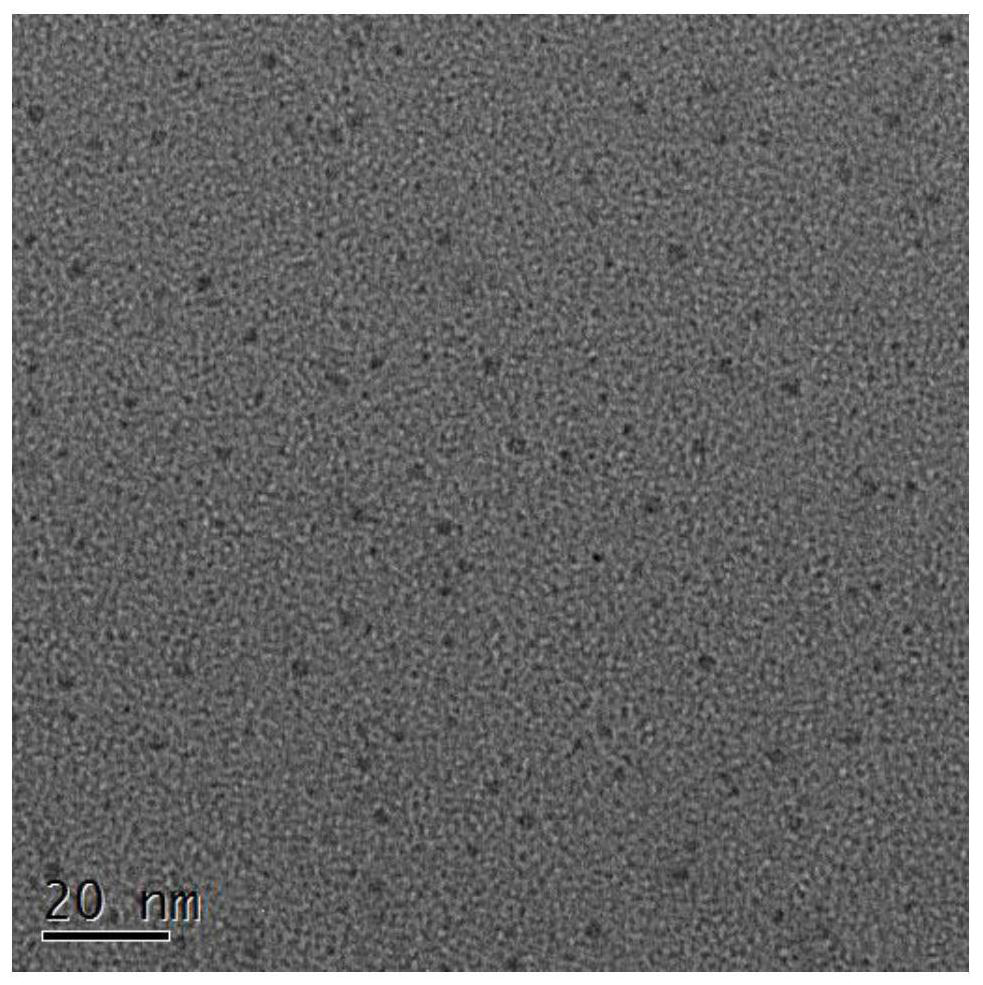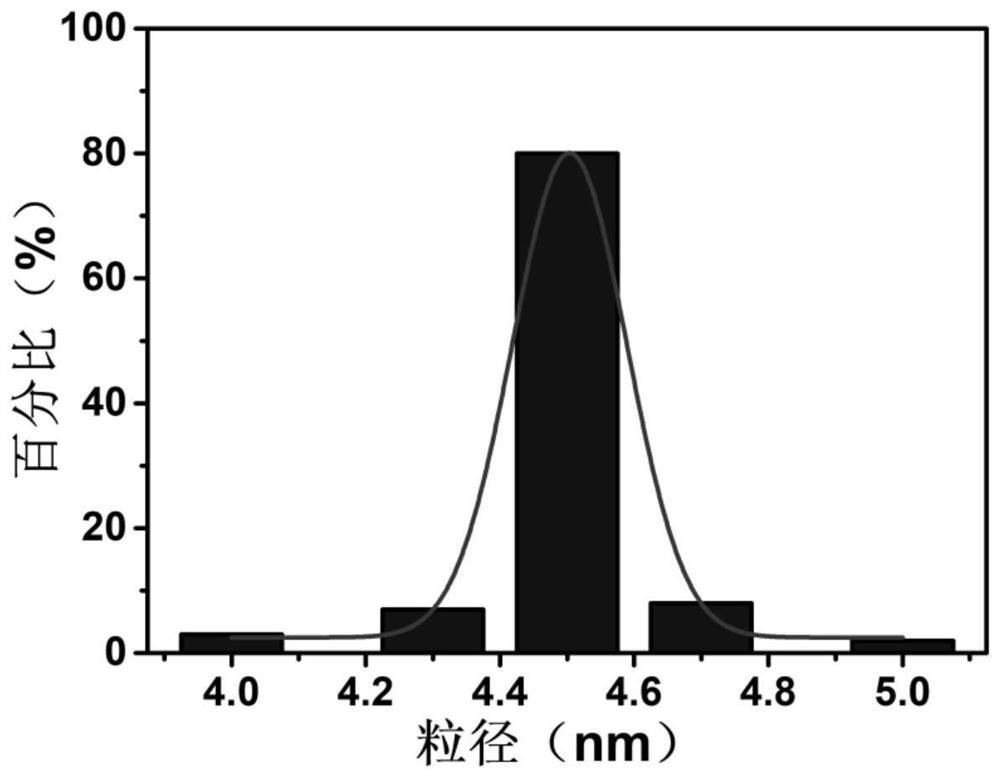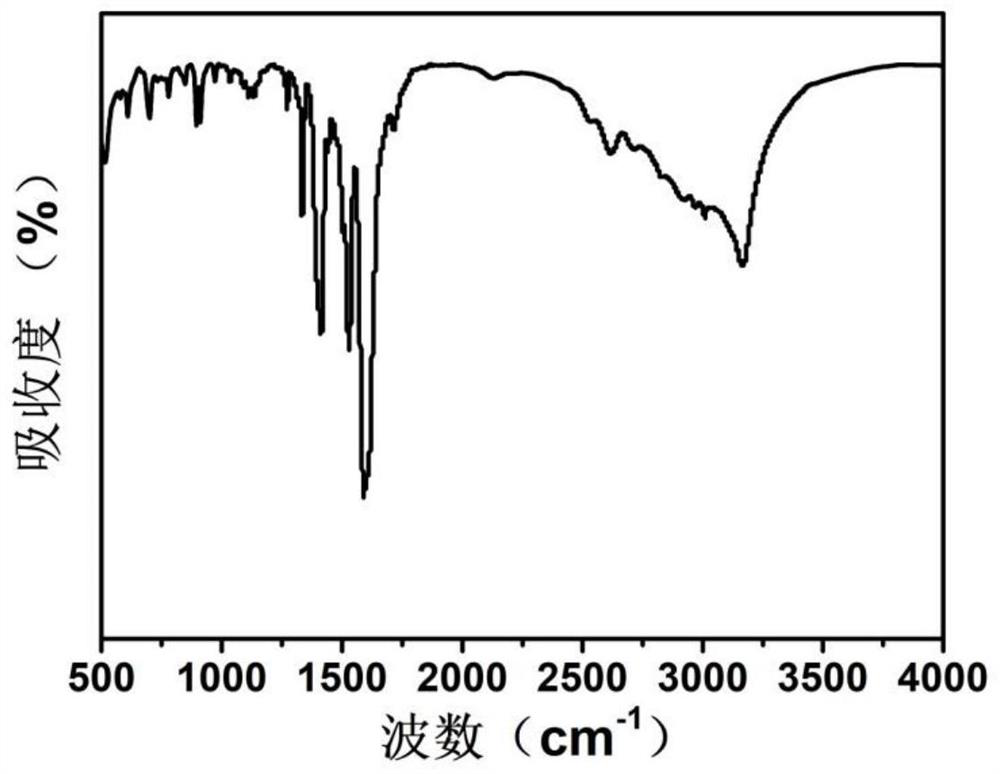Carbon dots, preparation method thereof and application of carbon dots in detection of hypochlorite
A technology of carbon dots and fluorescent carbon dots, applied in chemical instruments and methods, nanocarbons, measuring devices, etc., to achieve the effect of stable fluorescence properties and high fluorescence quantum yield
- Summary
- Abstract
- Description
- Claims
- Application Information
AI Technical Summary
Problems solved by technology
Method used
Image
Examples
Embodiment 1
[0045] A method for preparing carbon dots is provided, comprising the steps of:
[0046] Step 1: Weigh 0.5g of 2,4-difluorobenzoic acid, 1.25g of glycine and 0.2g of melamine respectively for later use.
[0047] Step 2: Put the above-mentioned medicines weighed into 30mL ultrapure water (the water resistivity is 18.4MΩ·cm -1 ) and 2mL of absolute ethanol in a 50mL polytetrafluoroethylene reactor, stir and mix.
[0048] Step 3: Put the reaction kettle in an oven and heat it at a constant temperature of 180°C for 24 hours, then lower the temperature to 25°C.
[0049] Step 4: Put the obtained brown solution into a 500Da dialysis bag, and put it into a beaker filled with 2L of ultrapure water for dialysis to remove impurities to obtain a light yellow carbon dot solution.
Embodiment 2
[0051] A method for preparing carbon dots is provided, comprising the steps of:
[0052] Step 1: Weigh 0.1g of 2,4-difluorobenzoic acid, 0.5g of glycine and 0.1g of melamine respectively for later use.
[0053] Step 2: Put the above-mentioned medicines weighed into 30mL ultrapure water (the water resistivity is 18.4MΩ·cm -1 ) and 0.1mL absolute ethanol in a 50mL polytetrafluoroethylene reactor, stir and mix.
[0054] Step 3: Put the reactor in an oven and heat it at a constant temperature of 120°C for 6 hours, then lower the temperature to 25°C.
[0055] Step 4: Put the obtained brown solution into a 500Da dialysis bag, and put it into a beaker filled with 2L of ultrapure water for dialysis to remove impurities to obtain a light yellow carbon dot solution.
Embodiment 3
[0057] A method for preparing carbon dots is provided, comprising the steps of:
[0058] Step 1: Weigh 1g of 2,4-difluorobenzoic acid, 2.5g of glycine and 0.5g of melamine respectively for later use.
[0059] Step 2: Put the above-mentioned medicines weighed into 30mL ultrapure water (the water resistivity is 18.4MΩ·cm -1 ) and 5mL of absolute ethanol in a 50mL polytetrafluoroethylene reactor, stir and mix.
[0060] Step 3: Put the reactor in an oven and heat it at a constant temperature of 200°C for 48 hours, then lower the temperature to 25°C.
[0061] Step 4: Put the obtained brown solution into a 500Da dialysis bag, and put it into a beaker filled with 2L of ultrapure water for dialysis to remove impurities to obtain a light yellow carbon dot solution.
[0062] The carbon dot prepared in Example 1 is characterized, and the specific characterization results are as follows:
[0063] 1. Characterize the carbon dots prepared in the above-mentioned embodiment 1 by transmissi...
PUM
| Property | Measurement | Unit |
|---|---|---|
| particle diameter | aaaaa | aaaaa |
Abstract
Description
Claims
Application Information
 Login to View More
Login to View More - R&D
- Intellectual Property
- Life Sciences
- Materials
- Tech Scout
- Unparalleled Data Quality
- Higher Quality Content
- 60% Fewer Hallucinations
Browse by: Latest US Patents, China's latest patents, Technical Efficacy Thesaurus, Application Domain, Technology Topic, Popular Technical Reports.
© 2025 PatSnap. All rights reserved.Legal|Privacy policy|Modern Slavery Act Transparency Statement|Sitemap|About US| Contact US: help@patsnap.com



